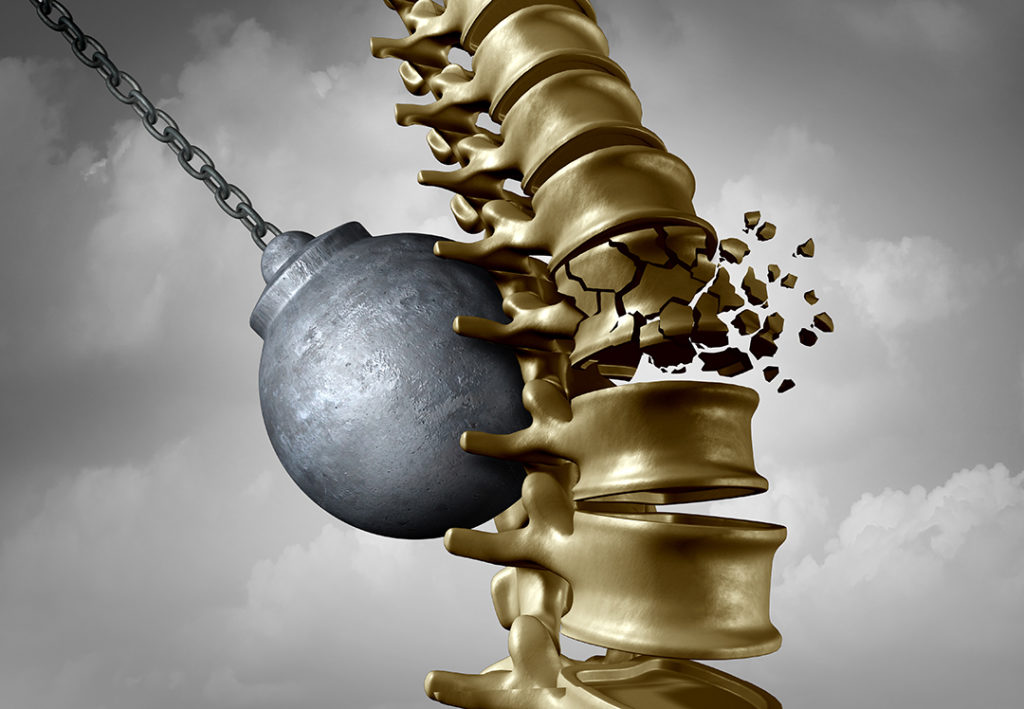Sometimes Confused with Arthritis
Although the bone disease known as osteoporosis is very common, it is also one of the most preventable. While middle-aged women —and onwards— are its primary target, it also affects men and is prevalent among all socio-economic and geographic groups. Meaning literally porous bones, osteoporosis is readily tagged the “silent disease”: it translates into having brittle bones that break easily, but the culprit, the loss of bone mass and the structural deterioration of bone tissue, happens inadvertently for years, and you may not show any symptoms until the very day you break a bone… which, as we all know, can cause great pain and entail severe disability.
May was instituted Osteoporosis Awareness and Prevention Month in order to inform of these simple facts and many others, such as…
- Of the estimated 10 million Americans suffering osteoporosis, 80% are women.
- Close to 30% of postmenopausal women have osteoporosis in the United States. These numbers are very similar throughout the Western world, namely Europe.
- Bone loss happens for a number of reasons, but mainly because your body is unable to absorb enough calcium from food. The body does not naturally produce calcium; it stores the calcium from food intake (or supplements) in your bones. Also, with age (and menopause in women), your body does not make new bone at the rate needed, so it takes the necessary calcium for this task from your bones, causing them to lose bone density.
- Women are more likely to have osteoporosis because: (1) they have thinner, smaller and less dense bones than men; (2) they live longer than men; and (3) their estrogen levels are severely depleted after menopause, estrogen being the natural hormone that protects bone density.
- Vitamin D helps the body absorb calcium, because just eating calcium-rich foods… well, it ain’t enough!!!
Symptoms
As mentioned earlier, osteoporosis may not show its true colors until you actually break a bone and learn that you have it. Hip fractures (17.5%), wrist fractures (16%), and vertebral fractures (15.6%) are among the most commonly reported broken bone sites.
Fractures of the vertebrae can cause your backbone to collapse and bend forward, typically showing these symptoms:
- Sloping shoulders
- Curved back
- Height loss
- Back pain
- Hunched posture
Prevention Treatment
- First, talk to your health care provider about bone health
- Clarify daily calcium and vitamin D doses, as recommended by your doctor
- Avoid smoking and excessive alcohol
- Engage in regular exercising or activities, such as:
- Brisk walking: 5 minutes for every hour sitting down
- Bridge
- Sit to stand
- Mini squat
- Arm/leg opposite lift/li>
Osteoporosis and Arthritis Confused
Osteoporosis and arthritis are often confused for two main reasons: on the one hand, osteoarthritis is really similar in name to osteoporosis (osteo being the Greek-based prefix and root for bone); on the other, and more importantly, both share similar healing and coping strategies. Exercise programs, featuring physical therapy and rehabilitation, are centered around stretching, strengthening, posture, and range of motion. Typical activities are low-impact aerobics, swimming, tai chi, and low-stress yoga.
On the other hand, there are remarkable differences in approach to this physical exercise: patients with osteoporosis must not practice activities that require bending forward at the waist, twisting the spine, or lifting heavy weights. Additionally, pain management strategies may differ, with arthritics applying them often and generally, while osteoporotics will only use pain relievers if they have fractured a bone due to a fall or severe osteoporosis causing spinal fractures.
Sources:
https://www.womenshealth.gov/a-z-topics/osteoporosis
https://www.bones.nih.gov/health-info/bone/osteoporosis/conditions-behaviors/osteoporosis-arthritis
https://www.therapeuticassociates.com/articles/osteoporosis-awareness-and-prevention


